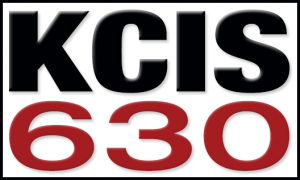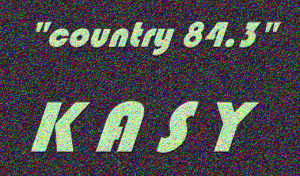
This is the second of a two-part blog exploring whether the most recent ‘AM Revitalization’ plans & decisions by the FCC are making a difference in single, small & medium markets. I’ve had dialogues with a number of “indie” & small-group owners & management in our state & a few others to guage their take on these changes including their plans, if any, to implement these. Since most asked for anonymity for themselves & their station call letters, I made the decision not to reveal any entities I spoke with. I posed two questions to all of them & in Part 1 we examined my findings of the first question. The FCC has a proposed rule-making & is soliciting comments on adoption of rules to allow AM broadcasters voluntary use of all-digital MA3 transmission, eliminating traditional analog broadcasting. All I spoke with had a “wait-and-see” cautionary approach. However most don’t feel at this time it’s cost-effective or worth the investment risks & loss of listeners. Many had the opinion this would be of more benefit to urban, major market AM’s.



The second question presented was whether the launch of FM translators has been a positive experience. All but two of the AM broadcasters I was in contact with have initiated simulcast FM translators. The remaining two are searching for existing translators that can be purchased & moved into their communities. The overwhelming response is that adoption of FM translators have been a major plus for AM broadcasters & have repatriated listeners to their programming that had long abandoned them for FM stations, either local or regional. Many who listened previously to a particular AM preferred hearing the same station on FM & have switched bands to listen. Most AM broadcasters with FM translators now emphasize the FM frequency before mentioning the AM & also seem to be going to great lengths to promote their new FM service. Certainly the technical costs of operating an FM signal are much lower than associated costs of transmitting on AM. The comparative improvements in audio & signal quality hardly need mentioning. However, readers will again find I am revisiting previous discussions on the problems associated with a too-late launch by the FCC to allow AM operators access to FM. Of note is the fact the FCC should have been visionary enough to realize as far back as 1980, that FM broadcasting
would overtake AM in popularity & listener preference. It should have been at that time AM broadcasters should have had the ability to access the FM band long before the proliferation of FM translators for existing FM stations, the launch of LPFM & the allegations of abuse of FM translator rules by corporate religious broadcasters disguised as “non-profits”. ‘Daytimers’, Class IV lower powered AMs on 1230, 1240, 1340, 1450 & 1490 should have had first opportunities to operate FM companion signals, followed by small & medium market stand-alone AM’s. High powered urban stations should have been last to access FM for new facilities to replace their AM plants.



The FCC’s late ‘AM Revitalization’ launch has squeezed translators for AM’s onto an increasingly congested & full FM band. This has unfortunately resulted in signals in the 250 watt & less category being issued to AM’s seeking to add FM translators. In many small markets & most considered medium markets, 250 watts is covering their city-of-license – but just barely. Here in the terrain-challenged Pacific Northwest, it’s a lot harder to get a clean FM signal to cover the desired communities. Certainly, in large urban centers, 250 watt outputs hardly do the job. A previous blog discussed expansion of the FM band from 88 mHz down to 76 mHz & attempts to persuade the FCC to adopt a rulemaking or even discuss this issue seem to reach a roadblock. With TV channels 5 & 6 along with those down to channel 2 now all mostly abandoned in the digital TV era, this spectrum is available & most Japanese FM receivers, past & present, have the ability to tune these frequencies with a change to internal switching. The same is
true of most vehicle radios manufactured in Asia or Japan. Today’s smartphones & inexpensive Chinese-made portable radio receivers all use an integrated circuit “FM chip” capable of tuning as low as 65 mHz which is currently assigned to TV channels 3 & 4. These need no internal modification & can be altered with simple software configurations. Many need nothing to accomplish this & already are capable of tuning from 65- 108 mHz. I have a Chinese made Baofeng 2-way VHF/UHF radio with built-in analog FM receiver that tunes to 65 mHz with no modification required. There are growing calls to expand the FM band to allow AM stations to migrate to these new frequencies with full power levels & abandon their AM
facilities for good. All the broadcasters I spoke with are on-board with this idea & some have submitted comments to support until-now futile attempts to persuade the commission to consider this. Canadian & now many Mexican AM broadcasters have ‘flipped’ to FM, shut down their AM facilities & remained successful, profitable gained new, younger listeners to their stations. This has also occurred with success in a number of EU countries & Japan will be next to allow commercial AM broadcasters to switch to FM & abandon their AM facilities. Given the opportunity, almost all of the stations I was in dialogue with would turn in their AM licenses, terminate their tower leases or sell property housing AM towers & switch to Class A – Class C FM signals, if given the chance. A few broadcasters mentioned to me this approach will use existing radios & analog FM transmission rather than filling up landfills & recycle centers with obsolete analog AM radios, no longer useful to receive all-digital AM. Expanding the FM band to either 76 or 65 mHz would accommodate a sizable number of current AM broadcasters.



Also discussed recently here was a novel proposal by 1470 KVSL in Show Low AZ. KVSL‘s owner Casa Pinon filed a “Silent STA” with the FCC. In it they proposed shutting off their AM transmitter for a one-year experimental period & just operating with their 107.9 FM translator only. The purpose was to determine the effects, both positive & negative, that could be derived from AM stations shutting off their AM transmitters for good & operating with their newly assigned FM translators functioning as the ‘primary signal’ source. The FCC flatly refused & wouldn’t even consider the idea. As the rules exist, FM translators cannot operate as “stand-alone” transmitters & must be fed from a primary source. If the primary station goes silent & files an STA, the operator is expected to also turn off the FM translator. This has happened already in actual practice. The FCC has made a huge mistake not allowing this or even LISTENING to the reasoning for trying this experiment. As mentioned, flipping AM stations to FM has been a proven success in many countries, especially here in North America. AM broadcasters throughout the US are discovering many benefits from operating companion FM translator & now a number of them are becoming convinced this may hold a viable solution, allowing the AM plants to be shut down, property sold or leases terminated & AM licenses deleted. Reducing the overhead & simplifying transmission costs have a promising future. Existing receivers & technologies are already in place to make this happen quickly. Reduction in AM signals will reduce congestion & co-channel interference & thin out the AM band. This could allow urban AM stations fighting interference problems by allowing power output increases beyond the legislated 50 kW. Realistic power levels of 100 – 200kW could be issued to urban AM stations to counter such problems.



FCC chairman Ajit Pai claims to be a great supporter of ‘AM Revitalization’. Certainly the FCC should be applauded for having the foresight to consider all-digital transmission on a voluntary, rather than mandated basis. This is certainly a welcome move for some AM operators able to maximize &
improve their stations. But Chairman Pai & the commission are demonstrating that they really aren’t listening to the majority of AM broadcasters, particularly in medium, small & single market communities. These broadcasters want the flexibility to achieve success through changing their
transmission band from AM to FM & to consider an expansion of the FM band to allow numerous full power signals. There’s no disputing that AM broadcasters feel that access to the FM band is the best opportunity to succeed into the future. The commission should be flexible enough to offer every tool in the toolbox to help AM broadcasters remain successful.




Some comments may be held for moderation. (New users)